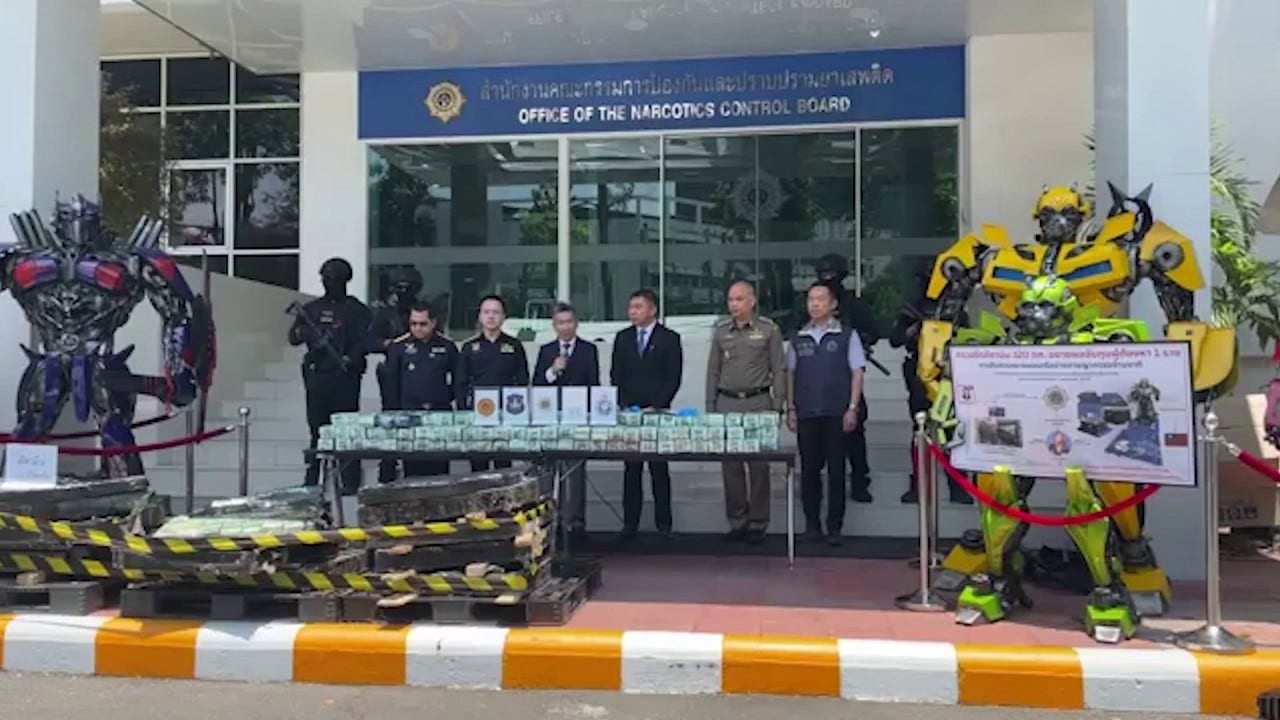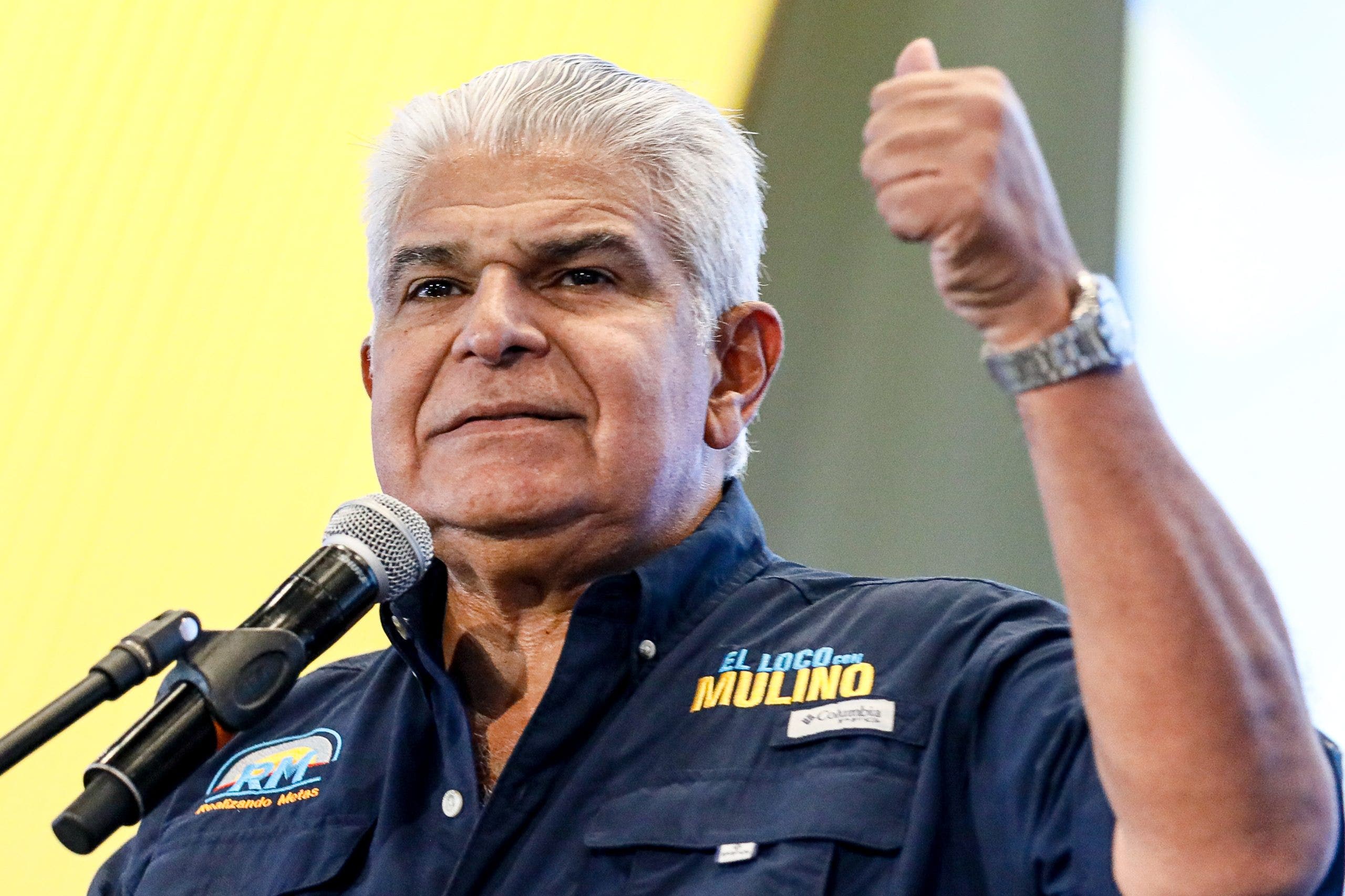World
How the U.S. Humanitarian Pier in Gaza Will Work

A humanitarian pier the U.S. military will bring to the Gaza Strip is currently being assembled and is expected to be ready to receive initial shipments of food and other aid early next month, according to military officials. The effort to deliver aid to the enclave through a maritime corridor, which was announced in March, will involve an elaborate, multistep process.
A thousand American soldiers and sailors will be involved in the pier project, a senior military official said in a Pentagon call with reporters on Thursday. The pier will initially enable the transfer of about 90 truckloads of aid per day, the official said, and will eventually ramp up to 150 truckloads per day at full capacity.
U.S. authorities have said the pier is intended to supplement, not replace, existing aid deliveries over land. U.N. data indicates that land-based deliveries have risen slightly in recent weeks but still fall far short of vast need in the enclave. Dozens of Gazans have died from causes related to malnutrition and dehydration, and the United Nations’ World Food Program has said half of Gaza’s population of 2.2 million is starving.
Once aid reaches the shore, relief organizations that will distribute it within Gaza will face familiar dangers and obstacles amid ongoing Israeli bombardment.
1 Aid, primarily food, will be procured from countries around the world.
A majority of the aid will be food collected from several countries and transported to the Larnaca port in Cyprus.
A spokesperson for the U.S. Agency for International Development, which is working closely with the military to coordinate plans for the pier, said some of the items that would come through the maritime corridor would include nutrient-dense food bars, sourced from Dubai; foods intended to treat severe malnutrition in children, sourced from Kenya; and relief supplies, including hygiene kits, sourced from Europe.
Military officials have said other countries and organizations will also contribute food and money.
2
Shipments will be inspected in Cyprus under Israeli oversight.
At the Larnaca port, Israeli representatives will be present as Cypriot authorities inspect items, according to an Israeli official with knowledge of the inspection plans.
The official said the standards for inspection would be the same as those at the land crossings into Gaza. Aid officials have said those inspections are exhaustive and sometimes arbitrary.
World Central Kitchen, a disaster relief nonprofit, has tested the maritime corridor twice before at a smaller scale in March. The loading, scanning and inspection process for those two ships took between two and three days each, according to Juan Camilo Jimenez Garces, a regional manager for the organization. The first ship, a partnership with the Spanish nonprofit Open Arms, carried about 200 tons of aid, while the second carried more than 300 tons.
3
The sea journey will take at least 15 hours.
The roughly 250-mile journey from Cyprus to Gaza normally takes about 15 hours, or a full day of travel, but it could take up to a couple of days depending on the weight of the cargo and the type of vessel. For example, the Open Arms ship, which towed its cargo on a separate platform instead of carrying it onboard, made the journey in about three days.
Ships can also be delayed because of unfavorable weather conditions. That was one factor that held up the second World Central Kitchen ship, Jennifer, for about two weeks at Larnaca after it was scheduled to depart.
4
Aid will be shuttled from a floating platform near Gaza to a pier anchored to land.
Gaza has no international seaport; Israel has for decades prevented the construction of one. Because waters near the shore are too shallow for large vessels to approach the humanitarian pier directly, the United States is also building a floating platform two miles off the coast, where ships carrying aid will first offload their cargo.
Smaller Army vessels, known as L.C.U.s (for “landing craft utility”) and L.S.V.s (for “logistics support vessels”), will transport the aid in batches from the platform to the pier.
Note: Distances are not to scale.
The New York Times
At least 14 U.S. ships are involved in the building and operation of the pier, according to a military official — some carrying necessary heavy machinery and equipment. U.S. service members will build the pier at sea, using modular units eight feet wide and 20 or 40 feet long, and a long ferry will drag it to shore. It will then be anchored by Israeli forces on the shore in northern Gaza to ensure there are no U.S. boots on the ground.
Humanitarian aid officials involved in receiving and distributing the aid have pushed to keep their engagement with the Israeli military as limited as possible.
5
Aid will have to be taken into Gaza by truck, but safe distribution remains a challenge.
The World Food Program will help distribute aid inside Gaza after it arrives at the pier, the U.S. Agency for International Development said last week.
Trucks coordinated by aid groups will transport aid from a secure area near the pier to U.N. warehouses, of which there are more than 20 across Gaza, and then eventually to hundreds of community kitchens, shelters, smaller warehouses and other distribution points throughout the region.
A majority of the distribution points are in southern Gaza, where most of the population has been forced to evacuate, but demographers estimate that several hundred thousand people remain in the northern part of the enclave, where famine is imminent.
A small number of routes are available to the distribution trucks, because the Israeli military has limited road access and Israeli airstrikes have turned much of the landscape to rubble. As usual, the convoys will need to coordinate their movements closely with the Israeli military.
Source: United Nations Office for the Coordination of Humanitarian Affairs Note: Road accessibility based on a map released by OCHA on April 24.
The New York Times
Humanitarian road access in Gaza
Aid officials have emphasized that the most efficient method of delivering aid into Gaza remains through land routes, and they have expressed concern that the pier might deflect attention from efforts to increase the amount of aid delivered over land.
Several previous attempts at delivering aid to Gazans have ended in deadly tragedy. This month, Israel struck a convoy belonging to World Central Kitchen, killing seven of the group’s aid workers. Israel has also bombed an aid warehouse on at least one occasion, a strike it said was targeted to kill a Hamas commander.
Aid experts say the hunger crisis in Gaza is human-made, citing the decades-long blockade of the territory by Israel and backed by Egypt, Israel’s near-complete siege after Oct. 7 and its tight restrictions on aid-truck entry ever since. The U.N. has said that Israel’s restrictions of aid, destruction of infrastructure and displacement of Gazans may amount to the use of starvation as a war tactic.
Israel has pushed back, and its officials have blamed U.N. aid agencies for failing to distribute aid effectively. They have also said that Hamas, which rules Gaza and has been deemed a terrorist organization, has been systematically seizing aid. David Satterfield, the U.S. special envoy for humanitarian aid, said in February that Israel had not brought forward specific evidence of theft or diversion of U.N.-delivered aid.
Meanwhile, the humanitarian crisis has continued to grow more dire. Many Gazans have died seeking aid, including more than 100 who were killed while trying to get food from an aid convoy, according to Gazan health officials, and more than a dozen who drowned while retrieving airdropped aid that had fallen into the sea.

World
The Cleaning Lady Renewed for Season 4 at Fox Amid Backstage Shakeup

ad
World
Police bust finds over 700 pounds of drugs inside Transformers statues

Thailand authorities made a startling discovery when they busted open lifesize Transformer robot statues and retrieved over 700 pounds of ketamine.
“Currently, we are facing a drug trafficking problem with transnational crime networks hidden in all regions, using Thailand as a base to smuggle drugs to third countries continuously through international shipments via air or sea,” Police Lt. Gen. Phanurat Lhakbun told reporters of the bust, which happened on April 25.
Australian authorities found around 220 pounds of methamphetamine that an unidentified woman tried to smuggle inside a food processing machine on March 12, and they kept an eye on her activities in the following weeks, Viral Press reported.
She allegedly tried to smuggle an even bigger batch of drugs inside the bases of lifesize statues of the Transformers characters Optimus Prime, Bumblebee and Greenlight and others. The statues ostensibly were to go to a movie exhibition in Taiwan, Channel News Asia reported.
THAILAND’S PRIME MINISTER MOVES TO OUTLAW MARIJUANA 2 YEARS AFTER ITS DECRIMINALIZATION
Police seized hundreds of pounds of ketamine hidden inside lifesize Transformer robots in Thailand. (Viral Press)
The woman allegedly paid around $4,800 to the shipping company to help her transport the statues. Authorities said she had received instructions from another unidentified woman in Laos who would receive the drugs. The narcotics board claimed that the drugs originated in Cambodia, and they have agents working to track down any accomplices in Taiwan.
FOUR FLIGHT ATTENDANTS ACCUSED OF USING TSA CLEARANCE TO SMUGGLE DRUG MONEY

The Thailand Narcotics Suppression Board presents the seized drugs, totaling around 700 pounds of ketamine. (Viral Press)
“The ONCB has cooperation projects with the Airport Interdiction Task Force to suppress and intercept drugs in airports and the Seaport Interdiction Task Force for intercepting drug imports to the inner part of the country and exports to third countries,” Phanurat said.
VIRGINIA FIRST LADY, AG TEAM WITH RECOVERING ADDICT TO LAUNCH INITIATIVES TARGETING STATE’S FENTANYL CRISIS

A Thai SWAT team, working with Thailand’s Narcotics Suppression Board, seized guns at a property in the Chinatown neighborhood of Bangkok on Jan. 17, 2018. (Roberto Schmidt/AFP via Getty Images)
The Thai authorities have intercepted more than four tons of crystal meth, two tons of ketamine and over 580 pounds of heroin in busts.
The narcotics board claimed that the drugs would otherwise end up in lucrative markets in nearby areas of Australia, Taiwan, Malaysia and Hong Kong, Newsflare reported.
World
Ukraine’s military chief admits ‘difficult situation’ in Kharkiv region

General Syrskii says situation in northeastern oblast ‘significantly worsened’ this week as Russian forces continue to advance.
Ukraine’s military chief has admitted his forces are facing a “difficult situation” in the northeastern region of Kharkiv, where thousands more people have fled their homes as Russian forces continue to advance.
“This week, the situation in the Kharkiv region has significantly worsened,” Oleksandr Syrskii wrote on Telegram on Sunday. “There are ongoing battles in the border areas along the state border with the Russian Federation.”
While admitting that the situation is “difficult” and Russian attackers had achieved “partial successes” in some areas, he said, “Ukrainian defence forces are doing everything they can to hold defensive lines and positions.”
The intense battles have forced at least one Ukrainian unit to withdraw, leaving behind more land to Russian forces across less defended settlements in the so-called contested “grey zone” along the Russian border.
By Sunday afternoon, the town of Vovchansk, among the largest in the northeast with a pre-war population of 17,000, emerged as a focal point in the battle.
Volodymyr Tymoshko, the head of the Kharkiv regional police, said Russian forces were on the outskirts of the town and were approaching from three directions. “Infantry fighting is already taking place,” he said. A Russian tank was spotted along a major road leading to the town, Tymoshko said, illustrating Moscow’s confidence to deploy heavy weaponry.
Evacuation teams worked non-stop throughout the day to take residents, most of whom were elderly, out of harm’s way.
At least 4,000 civilians have fled the Kharkiv region since Friday when Moscow’s forces launched the operation, Governor Oleh Syniehubov said in a social media statement. Heavy fighting raged Sunday along the northeast front line, where Russian forces attacked 27 settlements in 24 hours, he said.
The Russian Ministry of Defence said Sunday that its forces had captured four villages on the border in addition to five villages reported to have been seized on Saturday. These areas were likely poorly fortified due to the dynamic fighting and constant heavy shelling, easing the Russian advance.
Ukraine’s leadership has not confirmed Moscow’s gains. But Tymoshko said Strilecha, Pylna and Borsivika were under Russian occupation and it was from their direction the Russians were bringing in infantry to stage attacks in the embattled villages of Hlyboke and Lukiantsi.
Ukrainian President Volodymyr Zelenskyy said on Sunday that there were intense battles across parts of the region.
“Defensive battles and fierce fighting continue on a large part of our borderline,” Zelenskyy said, adding: “The idea behind the attacks in the Kharkiv region is to stretch our forces and undermine the moral and motivational basis of the Ukrainians’ ability to defend themselves.”
The gains are “significant not just because of the territory but also because in 10km (6 miles) or so they will be at a shelling distance of Kharkiv city, the second largest city in Ukraine,” Al Jazeera’s John Holman said, reporting from the Ukrainian capital, Kyiv.
“It also means that Ukraine is so stretched paper thin on different sides of the front, and it will probably have to divert soldiers from other areas and send them to the Kharkiv region,” he added.
Analysts said the Russian push is designed to exploit ammunition shortages before promised Western supplies can reach the front lines. Ukrainian soldiers said the Kremlin is using the usual Russian tactic by launching a disproportionate amount of fire and infantry assaults to exhaust their troops and firepower.
By intensifying battles in what was previously a static patch of the front line, Russian forces threaten to pin Ukrainian forces in the northeast while carrying out intense battles farther south, where Moscow is also gaining ground.
The advance comes after Russia stepped up attacks in March, targeting energy infrastructure and settlements, which analysts predicted was a concerted effort to shape conditions for an offensive.
-

 Education1 week ago
Education1 week agoVideo: President Biden Addresses Campus Protests
-

 Movie Reviews1 week ago
Movie Reviews1 week agoSabari Movie Review: Varalaxmi Proves She Can Do Female Centric Roles
-

 World1 week ago
World1 week agoEuropean elections: What do voters want? What have candidates pledged?
-

 News1 week ago
News1 week agoWhistleblower Joshua Dean, who raised concerns about Boeing jets, dies at 45
-

 Politics1 week ago
Politics1 week agoAustralian lawmakers send letter urging Biden to drop case against Julian Assange on World Press Freedom Day
-

 World1 week ago
World1 week agoBrussels, my love? Champage cracked open to celebrate the Big Bang
-
News1 week ago
A group of Republicans has united to defend the legitimacy of US elections and those who run them
-

 Politics7 days ago
Politics7 days agoHouse Dems seeking re-election seemingly reverse course, call on Biden to 'bring order to the southern border'














